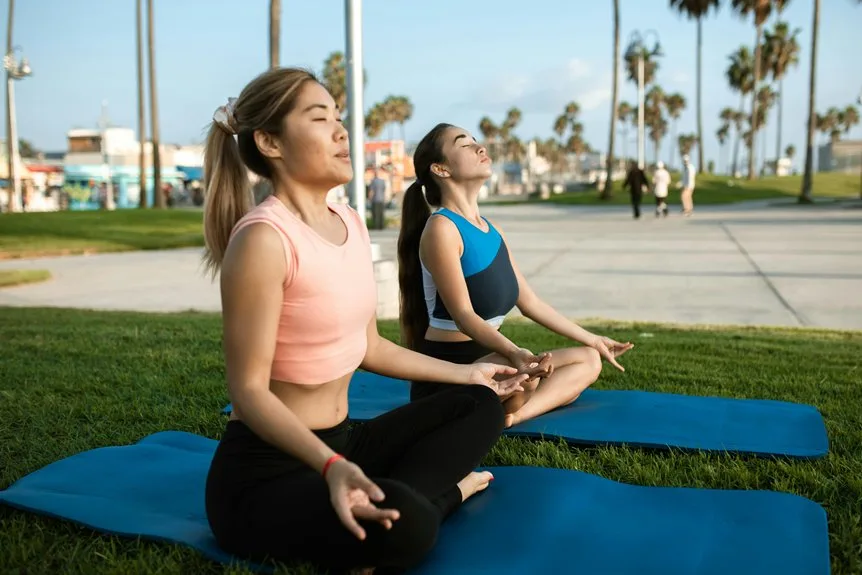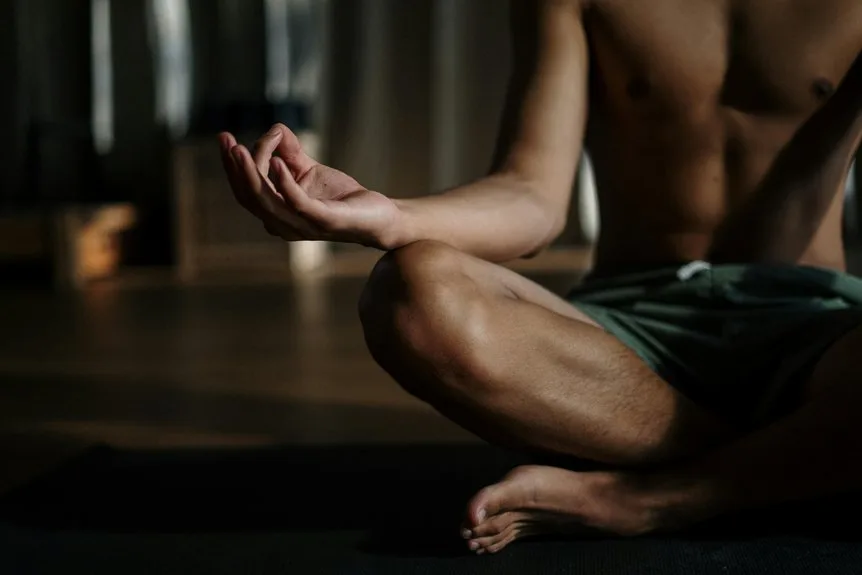When stress creeps in, the body often reacts before the mind knows what’s happening, and breathing gets shallow or quick. There’s actually a handful of breathing methods that can help hit the brakes on this stress cycle, each with its own unique twist—some even have names that sound like yoga moves or superhero powers. Before picking a favorite, it helps to understand how these breathing tricks work and why they can make such a noticeable difference.
How Deep Breathing Eases Tension and Calms the Mind
When stress starts to creep in, deep breathing can be a surprisingly effective tool for finding calm. By taking slow, deliberate breaths, the body activates its parasympathetic nervous system, which signals relaxation and helps dial back those racing thoughts. Deep breathing isn’t just about air; it’s about giving the mind a gentle break. As lungs expand fully, more oxygen flows in, clearing mental fog and lowering tension. Exhaling slowly helps release built-up stress, like letting go of a tight grip. Over time, practicing deep breathing can make it easier to find relaxation, even when life feels overwhelming. Incorporating relaxation techniques such as soaking in natural hot springs at Wilbur Hot Springs can enhance the calming effects of deep breathing exercises.
Understanding the Benefits of Regular Breathing Exercises
Regular breathing exercises offer a surprising range of benefits, making them a simple yet powerful tool for daily stress relief.
By practicing consistently, people can see improvements in both physical health, like lower blood pressure and better lung function, and emotional balance, with less anxiety and a greater sense of calm.
Even just ten minutes a day can help build resilience to life’s ups and downs, making tough moments feel a little less overwhelming.
Additionally, incorporating relaxation techniques like these into your routine can enhance your experience at retreats such as the Cuyama Buckhorn in Santa Barbara County, where amenities like a barrel sauna and outdoor fire pits provide a serene environment for unwinding.
Reducing Daily Stress
A simple shift in the way a person breathes can make a surprising difference in how stressful their day feels. Regular deep breathing exercises are an easy way to reduce stress and create a sense of calm. Even just ten minutes a day can help lower anxiety and elevate mood. Here’s what can happen when people make breathing routines part of their daily lives: Lowered cortisol levels, which helps the body feel less stressed. Improved mental clarity and focus for daily tasks. A calmer nervous system, making it easier to handle challenges. Increased sense of connection and resilience under pressure. Additionally, incorporating breathing exercises while staying in a setting with stunning Pacific views can further enhance relaxation and promote a peaceful mind.
Enhancing Physical Health
Feeling less stressed is a great start, but the benefits of mindful breathing reach far beyond just a calmer mind. Practicing a deep breathing technique—like diaphragmatic breathing—improves lung capacity and helps everyone breathe more efficiently, which means better oxygen for every cell. Over time, these exercises can lower blood pressure and reduce strain on the heart, making the body feel more balanced and resilient. Regular breathwork also helps regulate the autonomic nervous system, keeping stress hormones in check. Additionally, engaging in mindful breathing can be akin to visiting a serene outdoor oasis like the one at Hotel Indigo Napa Valley, offering a peaceful environment to enhance relaxation and reduce stress.
Supporting Emotional Balance
Ever wonder why simply taking a deep breath can make a tough moment feel a little easier? Regular practice of breathing techniques isn’t just calming—it actually helps support emotional balance in daily life. Here’s how these simple exercises work behind the scenes:
- Breathing techniques like diaphragmatic breathing increase heart rate variability, helping you regulate emotions better.
- Mindful breathwork, done consistently, can reduce anxiety and depression symptoms, improving your mood over time.
- Focused breathing activates the relaxation response, lowering stress hormones and evening out emotional ups and downs.
- With ongoing practice, these techniques make people more resilient to stress, creating a sense of emotional stability.
Positioning Yourself for Optimal Breathing Practice
Proper positioning can make a world of difference when it comes to breathing exercises for stress relief. Finding comfort is key, whether sitting or lying down.
A straight spine helps air move freely, while supportive cushions under the head or neck can keep tension at bay. Relaxing the shoulders, letting them drop away from the ears, invites deeper, calmer breaths.
Placing hands gently on the abdomen or chest gives feedback on breath flow. Loosening tight clothing around the torso or neck guarantees nothing restricts movement.
This simple attention to positioning not only nurtures comfort, but also helps everyone feel included and at ease.
Diaphragmatic Breathing for Lasting Stress Relief
Diaphragmatic breathing, sometimes called “belly breathing,” is one of those techniques that sounds fancy but feels surprisingly natural once you get the hang of it. This approach draws on the power of the diaphragm to enhance lung function and bring about real stress relief.
Practicing diaphragmatic breathing regularly can help lower cortisol, support heart health, and even give emotional balance a much-needed increase. Here’s how to make diaphragmatic breathing part of your routine:
- Lie down with knees bent.
- Place one hand on chest, one on abdomen.
- Breathe deeply, feeling your abdomen rise.
- Repeat for 5–10 minutes, several times daily.
Box Breathing: A Simple Technique to Reset Your Nervous System
While belly breathing offers a great way to unwind, box breathing steps in as another straightforward method that’s easy to pick up.
Box breathing means inhaling, holding, exhaling, and pausing for four counts each, forming a steady, square rhythm. This technique taps into the parasympathetic nervous system, quickly easing stress and bringing a sense of calm.
With no equipment needed, box breathing can be done anywhere—before a meeting, in a crowded space, or at home. Practicing regularly helps lower heart rate and blood pressure, while also elevating focus and emotional resilience, making it a trusted tool for everyday life.
The 4-7-8 Breath Method for Quick Relaxation
Even on the busiest days, finding a moment to breathe can make all the difference, and that’s where the 4-7-8 breath method comes into play. This breathing technique is a favorite for quick relaxation, requiring no special equipment or setup. It’s as simple as it is powerful—here’s how it works:
- Inhale gently through the nose for 4 seconds.
- Hold the breath for a count of 7 seconds.
- Exhale forcefully through the mouth for 8 seconds.
- Repeat the cycle two to four times, especially during moments of stress.
Practicing regularly helps people feel connected, calm, and clear-minded.
Alternate Nostril Breathing to Balance Body and Mind
There’s something uniquely soothing about alternate nostril breathing, a technique often called Nadi Shodhana in yoga circles. This practice, where one closes a nostril and breathes through the other, then switches sides, is known for balancing both body and mind.
By focusing on each slow inhale and exhale—about four to six seconds each—people often find their nerves calming and their thoughts clearing. It’s best done in a quiet spot, maybe before breakfast, when distractions are low.
Research shows regular alternate nostril breathing can lower heart rate and blood pressure, making it a simple way to support stress relief together.
Breath Focus: Using Imagery and Words to Enhance Calm
Breath focus, sometimes called breath awareness, takes basic deep breathing up a notch by adding simple imagery or calming words into the mix. This technique is all about blending visual imagery and focus words to create a stronger sense of calm. It’s a group-friendly approach, perfect for anyone who wants to feel more connected and grounded.
Here’s how it works:
- Choose a soothing focus word, like “peace” or “relax.”
- Envision yourself inhaling light or calm energy, then exhaling stress.
- Repeat your focus word with each breath in and out.
- Practice for 10–20 minutes to feel the benefits.
Lion’s Breath for Releasing Jaw and Facial Tension
A classic way to shake off stress, Lion’s Breath—also known as Simhasana—brings a playful twist to breathing techniques while helping to melt away tension held in the jaw and face.
Practicing lion’s breath is simple: sit comfortably, press your palms on your knees, open your eyes wide, and inhale deeply through your nose.
Then, open your mouth wide, stick out your tongue, and exhale with a loud “haaa” sound.
This technique directly targets facial tension, loosening tight muscles and encouraging a sense of release.
Repeating this breath several times invites more relaxation and a shared sense of lighthearted energy.
Humming Bee Breath to Soothe Frustration and Irritability
Humming Bee Breath is a simple technique that brings instant calm, using a gentle humming sound on each exhale to melt away frustration in moments of stress.
The soothing vibration floats across the forehead, relaxing tense muscles and helping the mind settle when anger or anxiety start to build.
Practicing this method in a quiet space can turn irritability into clarity, offering a peaceful reset for both body and mood.
Instant Calm Through Humming
There’s something unexpectedly soothing about making a gentle hum, especially when life’s frustrations start piling up. Humming Bee Breath, or Bhramari, invites instant calm by blending a deep inhale with a slow, humming exhale that creates a comforting vibration. This simple act welcomes anyone seeking a sense of belonging to a shared practice of ease.
The benefits accumulate quickly:
- Humming activates the parasympathetic nervous system for calm.
- Placing fingers on the ear cartilage enhances vagus nerve stimulation.
- Just a few minutes can lower heart rate and irritability.
- Quiet spaces make the humming more effective.
Technique for Forehead Relaxation
Ever wonder why stress seems to settle right in the forehead, creating that signature tension after a tough day? The Humming Bee Breath, or Bhramari, steps in as a simple yet powerful technique for forehead relaxation.
By taking deep breaths and exhaling with a gentle humming sound, this method sends soothing vibrations across the forehead. Placing fingers on the tragus cartilage by the ears can make these calming effects even stronger.
Practicing in a quiet space helps lower heart rate and ease frustration. Over time, regular use can encourage mental clarity and emotional steadiness, making everyday stress feel more manageable.
Managing Anger and Anxiety
How often does anger or anxiety seem to bubble up at the worst possible moment, leaving a sense of frustration that’s hard to shake? Breathing helps manage these tricky emotions, and the Humming Bee Breath (Bhramari) is a simple yet powerful tool to reduce stress. Here’s how this technique works:
- Inhale deeply through the nose, then exhale with a soft humming sound.
- The gentle vibration activates the vagus nerve, lowering heart rate and blood pressure.
- Practicing for 5-10 minutes calms the mind and soothes irritability.
- Quiet environments enhance focus, strengthening emotional resilience over time.
Sitali Breath: Cooling Down Body and Mind
Sitali breath, sometimes called the “cooling breath,” stands out as a practical tool for calming both the body and mind, especially during moments of stress or when heat seems overwhelming. This breathing technique involves inhaling through a curled tongue or pursed lips, bringing a noticeable coolness to the air as it enters.
As people practice Sitali breath for up to five minutes, they often find relaxation sets in, with stress and agitation easing away. Done in a peaceful, allergen-free space, it helps manage anxiety, lower body temperature, and enhance mental clarity—making it a great addition to anyone’s relaxation toolkit.
Fixing Shallow Breathing and Improving Lung Function
Many people don’t realize how often they fall into shallow breathing, where quick, chest-level breaths can leave them feeling jittery and tense.
By learning to spot these habits and practicing diaphragmatic breathing, anyone can help their lungs work better and feel more relaxed.
Making a habit of noticing how you breathe throughout the day turns each breath into a subtle reminder to slow down and recharge.
Recognizing Shallow Breathing Patterns
A lot of people don’t even realize when they’re stuck in a shallow breathing pattern, but it’s more common than you’d think. Shallow breathing, or rapid chest breathing, often slips in unnoticed during stressful moments or everyday routines.
Learning to spot it can help a person shift toward healthier habits, like diaphragmatic breathing, which feels more grounding and relaxed.
To recognize shallow breathing, look for:
- Quick, short breaths mostly in the chest, not the belly
- A tight or tense feeling in the shoulders or neck
- Frequent sighing or yawning
- Feeling out of breath even when at rest
Practicing Diaphragmatic Breathing
Ever wondered why some people seem to stay calm even when life gets chaotic? One reason might be diaphragmatic breathing. Unlike shallow chest breathing, this technique uses the diaphragm, letting the abdomen expand as you inhale.
Practicing diaphragmatic breathing for just 5-10 minutes, three to four times daily, can help reduce stress and encourage relaxation. To get started, simply lie on your back with knees bent, place one hand on your chest and one on your belly, and breathe in deeply through your nose.
Over time, this method can fix shallow breathing and even improve lung function for better overall well-being.
Enhancing Daily Breath Awareness
Breath is something most people barely notice, yet it has a powerful influence on stress and well-being. Many fall into the habit of shallow breathing, which can leave them feeling tense or anxious. Reinforcing breath awareness and practicing deep breathing helps shift this pattern, making each inhale and exhale more effective.
Over time, these habits enhance lung function and support a sense of belonging to one’s own body. To cultivate better breathing:
- Notice how you breathe when calm versus stressed.
- Practice equal breathing, matching inhale and exhale length.
- Try resonant breathing for lung elasticity.
- Set daily prompts for mindful breath checks.
Practice Tips and Safety Considerations for Stress-Relief Breathing
When starting out with stress-relief breathing techniques, it’s helpful to keep a few simple safety rules in mind. Practice tips include sitting or lying down during exercises, which helps prevent dizziness.
For anyone with asthma, COPD, or heart issues, consulting a healthcare professional is an important safety consideration. If discomfort or anxiety increases, it’s okay to stop and seek advice from a qualified practitioner.
Avoid rapid or forceful breaths, especially if you’re feeling under the weather. For the best experience, choose a quiet, calm space, free from distractions.
This way, everyone can feel secure and supported while practicing.
Frequently Asked Questions
Which Breathing Technique Is Best for Stress?
Selecting the best breathing technique for stress often depends on individual needs, but integrating diaphragmatic breathing with mindfulness meditation offers a sense of calm and belonging, cultivating relaxation and emotional connection within a supportive, mindful community.
What Is the 4-7-8 Breathing Method for Stress?
The 4-7-8 breathing method encourages mindful breathing by inhaling for 4 seconds, holding for 7, and exhaling for 8. This promotes diaphragmatic relaxation, cultivating a calm sense of unity and belonging during stressful moments.
What Is the Healthiest Breathing Technique?
The healthiest breathing technique emphasizes mindful breathing and diaphragmatic relaxation. By focusing on slow, deep breaths that engage the diaphragm, individuals cultivate a sense of calm and connection, supporting both physiological balance and emotional well-being within their communities.
What Are 5 Relaxation Techniques That Can Be Used to Regulate Stress?
Nearly 77% of people experience physical symptoms from stress. Five relaxation techniques include mindfulness meditation, progressive muscle relaxation, deep diaphragmatic breathing, guided imagery, and yoga, all promoting a sense of calm and unity in supportive communities.
Final Thoughts
Breathing brings balance, banishing bothersome stress with simple, steady steps. Deep diaphragmatic breaths, buzzing bee hums, and cooling sitali sighs all help soothe tension, leaving you feeling refreshed and relaxed. With a little practice, these powerful, practical techniques can convert your mood and mindset. So, whenever worries pile up, pause, find your favorite method, and breathe your way back to calm. Remember, better breathing isn’t just a phrase—it’s your secret weapon for everyday serenity.







